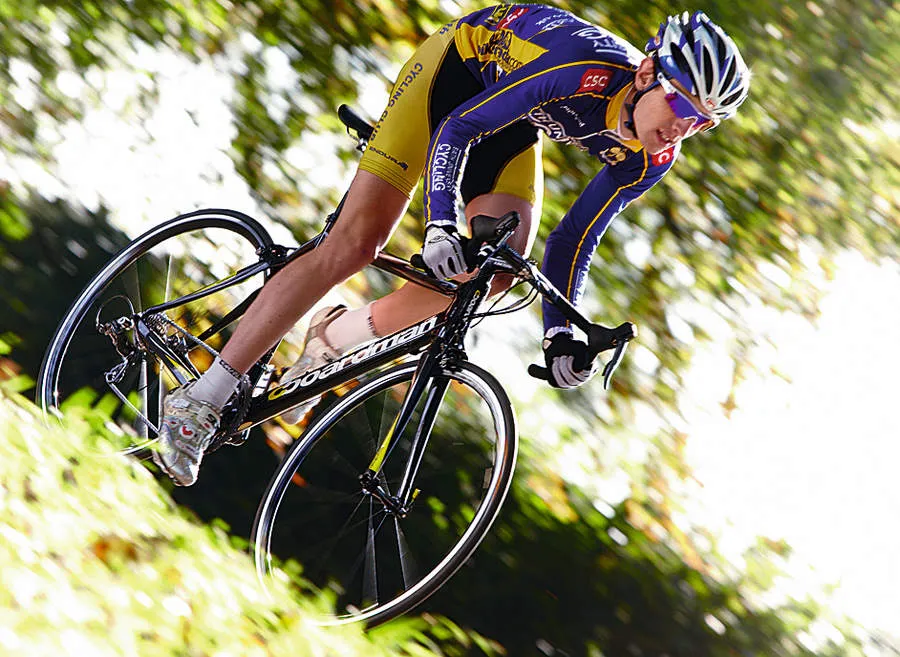Although still relative newcomers, Boardman have firmly established themselves as a brand to be reckoned with, backed up by an undeniable pedigree steeped in the culture of competitive cycling.
The Pro Carbon is a nicely turned out machine, designed to deliver speed above all. Though it’s a bit of a brittle beauty on the surface, when pressed it’s as tough and keen as an Arabian thoroughbred.
Handling: Impulsive, requires a deft touch, with an overly light front end when in the saddle
For 2010 Boardman have managed to improve what was already an exceptional bike. The Pro Carbon's new BB30 bottom bracket, combined with its exceptionally light weight, really makes it leap forward.
Climbing is made easy due to the low overall weight of around 7kg (15lb), but is best accomplished seated, as the standing position requires too much of a shift in pedalling style.
The relaxed head angle and more generous trail impose their will on the front of the bike, creating a split personality: when you’re riding in the saddle, the front end of the bike has a disconcertingly light and ‘unplanted’ feel about it.
This switches into an ‘on rails’ character when standing, which makes out-of-the-saddle efforts such as sprinting feel awkward, with the bike fighting you as you try to weave it.
Chassis: Beautiful exterior; low weight; innovative design touches
The new Pro Carbon 1,122g (2.5lb) monocoque frame is characterised by flowing lines and thoughtful details, such as the pierced head tube, which allows a cleaner shifter cable route from the handlebar, and internal rear brake cable routing.
An all-carbon fork tips the scales at just 355g, and completes the front with straight blades, metal capped carbon dropouts and a very rigid, differentially sized steerer featuring a 1.5in lower bearing.
The added sharpness this brings to the handling is also reflected in a more muscular appearance that traditionalists might find harder to get used to.
A broad oval down tube, almost aerofoil in shape, intersects the resized bottom bracket area, but doesn’t have a drastic effect on aesthetics; in fact, it benefits from better visual flow, as the external threaded cups no longer protrude, being no longer needed.
Rectangular shaped chainstays merge into a curved wishbone seatstay setup that’s effective in power transfer though not so much in comfort.
The attractive BB30 carbon crankset provides a Q-factor the same as the 145mm offered by Campag or Shimano. Its large cartridge bearings are similar in size to the ones you would find supporting your washing mashing drum, while the omission of external cups allows a logical reduction in width of the spindle.
So those in search of a Graeme Obree style setup between their legs will be pleased to know the Q-factor can be cheated down to 143mm if you avoid the use of protective pedal washers, though it’s not recommended if you have cheap and nasty pedals with no protective flange adjacent to the threads.
Equipment: Great value finishing kit and wheels; SRAM offer a truly worthy alternative
The SRAM Force drivetrain complemented by Ritchey WCS equipment is nearly perfect. Fit and finish of components is impeccable and oozes quality, despite the reasonable price.
Compared to Shimano or Campag, the Double Tap levers require less finger force for more movement to actuate the very positive shifting, while the SRAM dual pivot brakes are as powerful as they come, to the point of having to exert caution if you’re used to a different brand.
A useful amount of road feel is allowed to come through to the rider, with the generally unyielding nature of this efficient frame tempered by a well padded Fizik Arione-like titanium-railed saddle, along with the minimally spoked Ritchey wheelset.
The WCS DS wheels are attractive, with the proportionally sized, offset rear rim deeper sectioned than the front. They’re light too. Spoke tension wasn’t as high as it should have been though, and required re-tensioning and retuning after only the first couple of rides.

